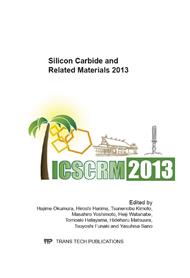p.507
p.513
p.517
p.521
p.525
p.529
p.533
p.537
p.541
Low Energy Proton Radiation Impact on 4H-SiC nMOSFET Gate Oxide Stability
Abstract:
The 4H-SiC MOSFET electrical response to 180 keV proton radiations at three different fluences has been evaluated. For a certain dose, the devices show an apparent improvement of their electrical characteristics likely due to the N and/or H atoms diffusion inside the oxide layer. This work complete our previous studies on high energy proton irradiation, showing that the 4H-SiC MOSFET is also robust to the low energy proton radiation, when the proton implanted range is located near the MOS interface.
Info:
Periodical:
Pages:
525-528
Citation:
Online since:
February 2014
Price:
Сopyright:
© 2014 Trans Tech Publications Ltd. All Rights Reserved
Share:
Citation:


